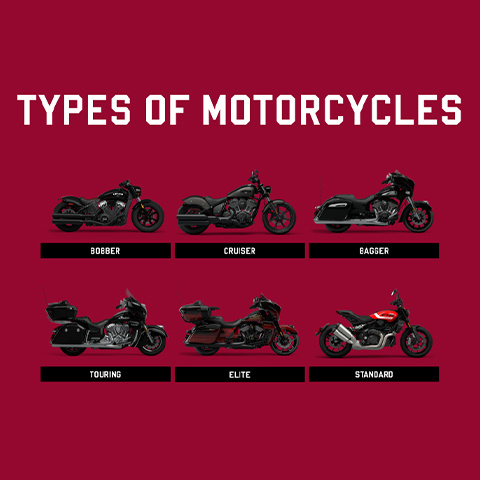The Basic Principles Of Motorcycle Boots
The Basic Principles Of Motorcycle Boots
Blog Article
Not known Incorrect Statements About Motorcycle Boots
Table of ContentsAll about Motorcycle BootsThe Ultimate Guide To Motorcycle BootsHow Motorcycle Boots can Save You Time, Stress, and Money.Motorcycle Boots Things To Know Before You Buy7 Easy Facts About Motorcycle Boots DescribedMotorcycle Boots for Beginners
The crucial elements of modern-day motorbikes are presented listed below.; this has actually been made use of all with motorcycle background yet is now ending up being extra common.It was extensively unpopular and typically related to as a bad concept at the time. Today it is an utilized on some "thumpers" (single-cylinder four-strokes) that normally have dry-sump lubrication calling for an outside oil storage tank. It has given that gained some cachet in the modern-day custom-made bike globe as well because of the space cost savings it can manage and the recommendation to an earlier age.
Any type of storage container for gas may be so called, the term is usually used to part of an engine system in which the fuel is kept and moved (fuel pump) or launched (pressurized gas) into an engine. A motorbike fork is the section of a motorcycle that holds the front wheel and enables one to guide.
The Best Strategy To Use For Motorcycle Boots
The mix of rake and path figures out how steady the motorbike is. motorcycle boots. The 'fork' on a bike includes several parts. The triple trees (also known as yokes) hold the fork tubes (which contain the fork springtimes), and are secured to the neck of the framework by the guiding stem.

Bikes have primarily, however not solely, been created with one to four cylinders, and designers have actually attempted virtually every you can possibly imagine format. The most common engine arrangements today are the solitary and twin, the V-twin, the opposed double (or boxer), and the in-line three-way and in-line 4. A variety of others layouts have gotten to mass manufacturing, consisting of the V-4, the flat 6-cylinder, the level 4-cylinder, the in-line 6-cylinder, and the Wankel engine.
Examine This Report on Motorcycle Boots
Chain-drive usages sprockets and a roller chain, which needs both lubrication and modification for prolongation (stretch) that takes place via wear. The lube goes through being shaken off the fast-moving chain and causes gunk and dirt accumulation. Chains do degrade, and too much wear on the front and back sprockets can be hazardous.
Standard roller chain-drives endure the possibility for resonance, as the reliable span of action in a chain and gear combination frequently alters throughout the revolution ("chordal action"). If a drive sprocket revolves at consistent RPM, then the chain (and the driven gear) has to speed up and decelerate constantly. Many chain-driven motorbikes are fitted with a rubber bushed back wheel center to eliminate this vibration problem.
These chain oilers differ in class, but all add substantially to the life of the chain. The custom-made of lubing by submersing the chain in a tin of warm grease stopped in the very early 1970s, when most chains had rubber "O'-rings.
The Buzz on Motorcycle Boots
A toothed belt is regularly made use of. Nonetheless, they are not as long lasting when based on high horsepower the original source as a chain. You can not change the length and adjustment last drive proportions as easily as chains. They likewise can not cover as carefully around chains. And call for larger pulleys compared to chain gears to get an effective final drive proportion.
A shaft-drive is typically totally confined; the aesthetic cue is a tube prolonging from the back of the transmission to a bell housing on the rear wheel. Inside the bell housing a bevel equipment on the shaft mates with one more on the wheel place. This arrangement transcends in regards to noise and tidiness and is virtually maintenance-free, with the exemption of occasional fluid adjustments.
The extra equipment sets are a source of power loss and added weight. Essentially all high-performance auto racing motorbikes use chain-drive because they are the most mechanically efficient transmitting power to the rear wheel.

Unknown Facts About Motorcycle Boots
There are tires made for dust bikes, touring, sport and cruiser visit this site right here bikes. Dust bike tires have knobbly, deep treads for maximum grip on loosened dirt, mud, or gravel; such tires often tend to be less secure and noisier on smooth surfaces.
Exploring tires are typically made of a tougher rubber compound for better sturdiness, these might last longer but have a tendency to supply much less straight-out hold compared to sporting activities tires at optimum operating temperatures. Visiting tires typically supply more grip at reduced temperature levels and can be much more fit to riding in cool or winter problems where a sporting activity tire may never reach its optimum operating temperature.
These have a tendency to have more powerful sidewalls as they are usually fitted to much heavier equipments. Motorsport or racing tires use the highest possible of degrees of grasp. As a result of the heats at which these tires normally operate, make use of outside a racing setting is dangerous, usually these tires do not reach their maximum temperature level which provides much less than ideal hold.
Motorcycle Boots - Truths

There are numerous brake-performance-enhancing aftermarket components offered for the useful content majority of bikes, consisting of brake pads of varying compounds and steel-braided brake lines.
Report this page